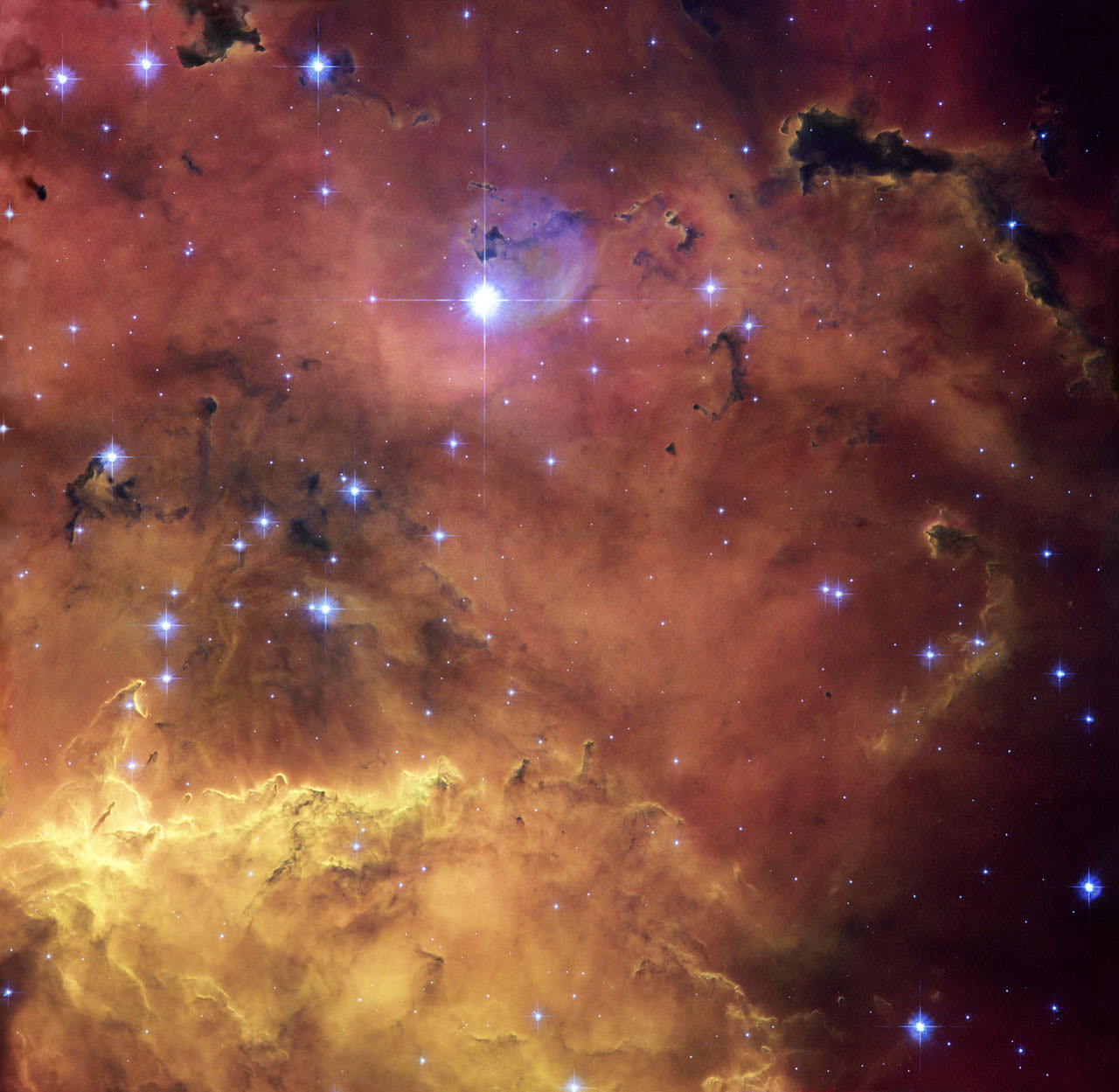[/caption]
OK, that headline doesn’t rhyme, but this incredible new Hubble image looks like a witch’s cauldron of an exotic cosmic brew. It billows with huge clouds of gas and dust and is sprinkled with Eye of Newt, um…er, bright blue hot young stars. These dust clouds in NGC 2467 look like a murky, shadowy liquid, but they are actually star forming regions made mostly of hydrogen, perfect for bubbling up newborn stars. And your little dog, too.
NGC 2467 lies in the southern constellation of Puppis, approximately 13,000 light-years from Earth.
The picture was created from images taken with the Wide Field Channel of the Advanced Camera for Surveys through three different filters (F550M, F660N and F658N, shown in blue, green and red respectively). These data were taken in 2004 but just released today.
This region looks somewhat like the Orion Nebula and the hot young stars that recently formed among this bubbling brew are emitting fierce ultraviolet radiation that is causing the whole scene to glow while also sculpting the environment and gradually eroding the gas clouds. Studies have shown that most of the radiation comes from the single hot and brilliant massive star just above the center of the image. Its fierce radiation has cleared the surrounding region and some of the next generation of stars are forming in the denser regions around the edge.
Source: ESA Hubble


beatiful picture
beautiful picture
I’ve got something cool here. Did you know the contributions that Guillermo Haro has given to observational astronomy in Mexico were very remarkable? He was the one who detected the huge number of planetary nebulae in the galactic center’s direction. He also made the same discovery to that of George Herbrig; which is the detection of non-stellar concentrations of very highly- dense clouds close to the area where a star was recently formed. It is now called the Herbrig-Haro objects. The discovery of flare stars in the location of the Orion Nebula and the discovery of stellar aggregates of various ages were all made by Guillermo Haro with the help of his co-workers. His passion for astronomy and his intense activity in discovering flare stars were his life’s works until he died on April 26, 1988.
Hmmm…. Pillar’s of creation in the Eagle Nebula, and the Witch’s Cauldron in NGC 2467. It could catch on.
I feel small, very small, smaller than a dust partical. Jet I can see and percieve the beauty
that surround me but I’m not able to comprehend? The meaning of it all, is it done just for me? What is my purpose, why me? What makes me so important that I’m part of this? Please tell me who you are, to create all this just for me!